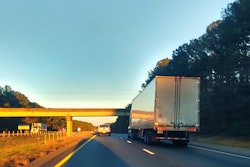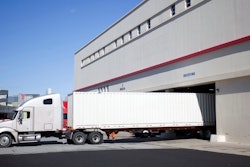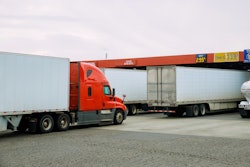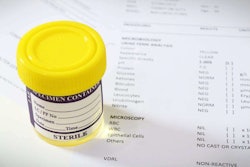Tires are a truck owner’s second highest variable expense behind fuel. Good habits can go a long way to prolonging your tire life to get the most out of your purchases.
Perform routine maintenance
If a technician can initiate by hand even the slightest irregular movements in tie rod ends, kingpins, wheel bearings and torque rods, that spells trouble. The plungers inside shock absorbers create friction, and friction creates heat, so if the shock, not the outer dust barrel covering the top half of the shock, is hot to the touch after driving, it’s working. If it’s cool to the touch, it’s not working and should be replaced.
Make sure bushings at the top and bottom of shocks are inspected and replaced whenever worn. If you can grab the shock absorber and rattle it, the bushings have pounded themselves out.
Shocks should be checked every maintenance service cycle and replaced in pairs if there’s any sign of leaking fluid.
On the steer axle, change your shocks at least as often as you change your tires. On the drive axle, get more aggressive, replacing shocks halfway through the tire’s life and when the tires are changed.
Maintain proper inflation
Ironically, maintaining correct inflation is free and relatively easy, yet it’s the highest-saving maintenance you can perform on your truck. Improper inflation is by far the greatest reason why tires fail or wear out prematurely, also wasting fuel.

[Related: Winter tire management for greater tread life]
Daily pre- and post-trip inspections give owner-operators the opportunity to check pressures and also look for leaks, punctures, broken valve stems or embedded objects such as nails. Even absent damage, truck tires typically lose one to two pounds of pressure monthly from normal use. A slow leak might cost you one to three pounds of air a day. For each pound of pressure lost, a tire’s on-road temperature rises about 2 degrees, and hot tires are prone to losing tread more quickly and failing.
Don’t overinflate, either. An overinflated tire sustains rapid and irregular wear and is more susceptible to damage from running over debris and scrubbing curbs.
Underinflated tires build up excessive heat, which can damage the tire and shorten its life. Inflation also affects performance, fuel economy and maintenance costs.
Also be mindful of tire pressure in the winter, as even without a leak, tire pressure drops in cold weather. For every 10-degree Fahrenheit drop in temperature, expect your tire pressure to drop by 1 to 2 psi.
Employ good driving habits
Another element of tire wear you have complete control over is how the truck is driven under less-than-ideal conditions. More conservative driving over rough surfaces helps reduce wear.
Speeding, hard braking, curbing and tight turns cause tires to wear faster or even develop irregular wear. On the other hand, steady acceleration, braking and steering can extend tire life. Many of the problems caused by bad driving habits show up as uneven tire wear.
If you notice unusual shimmying or repetitive bumps, inspect your tires. Even absent rough driving, look for irregular tread wear in your daily pre- and post-trip inspections.
[Related: Owner-operators must improve efficiency to compete]
Double down on alignment
Many people believe they should get new tires installed before they have a truck aligned. The opposite is true -- take your truck to the alignment shop with the old tires on. That way, technicians can read your tire wear to learn what is wrong with the alignment and determine more precisely how to make adjustments that solve the problems.
Also make sure your bearings are adjusted properly in all positions, and check for proper mounting -- a simple inspection. Look for a ring molded into the tire where the rim and tire meet. Measure the distance from the rim to that line at four points around the tire; each measurement should be within 2/32-inch. If the variance is greater, the assembly needs to be broken down and remounted properly.
Mounting should be followed with a check of the radial run-out (deviation of the tire from a perfect circle) and lateral run-out (deviation of the sidewall from a perfect plane). Both measure how well the wheel assembly is mounted on the hub. Good quality run-out gauges cost less than $100.
Read next: Time management can make or break an owner-operator's business











